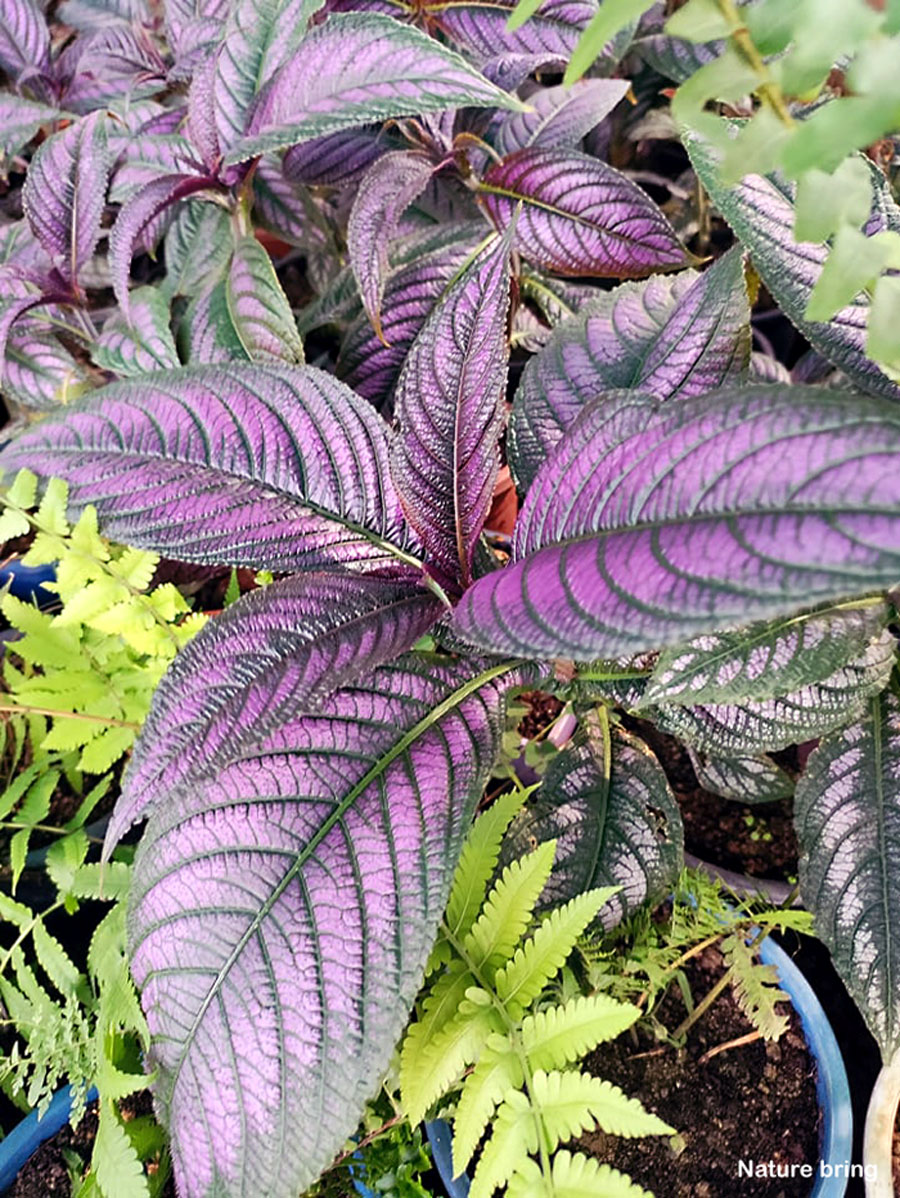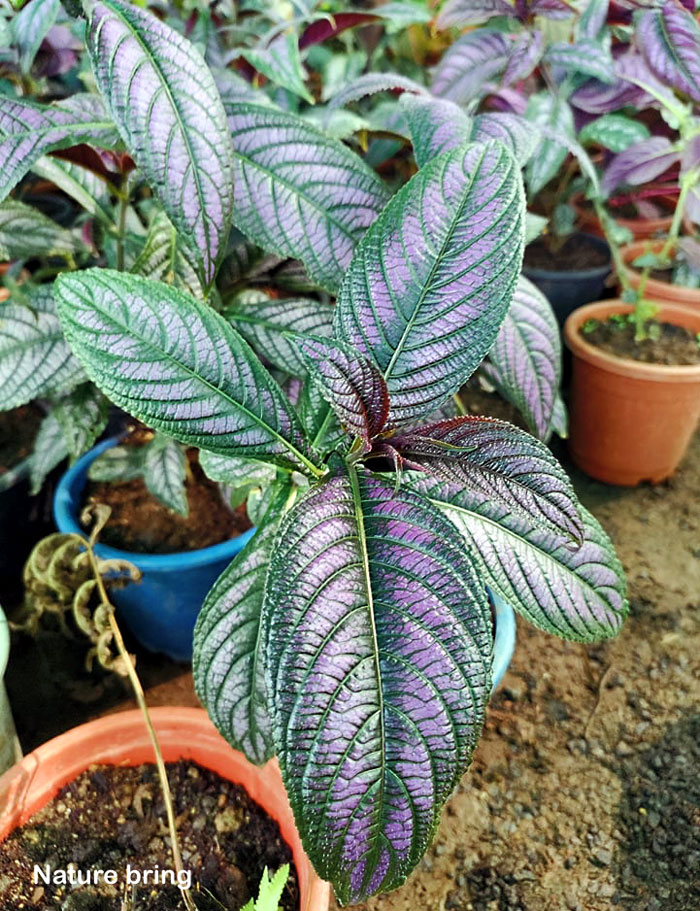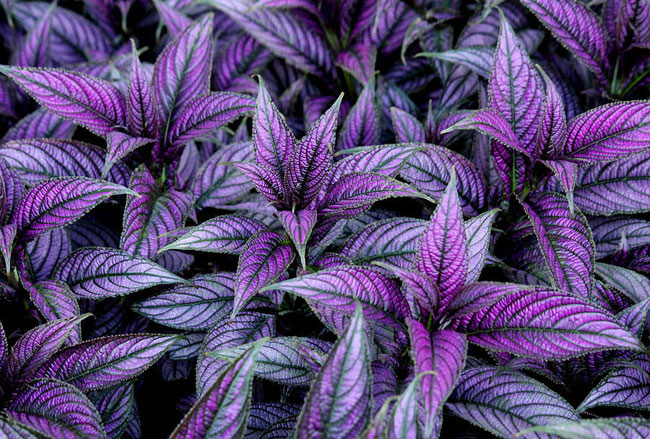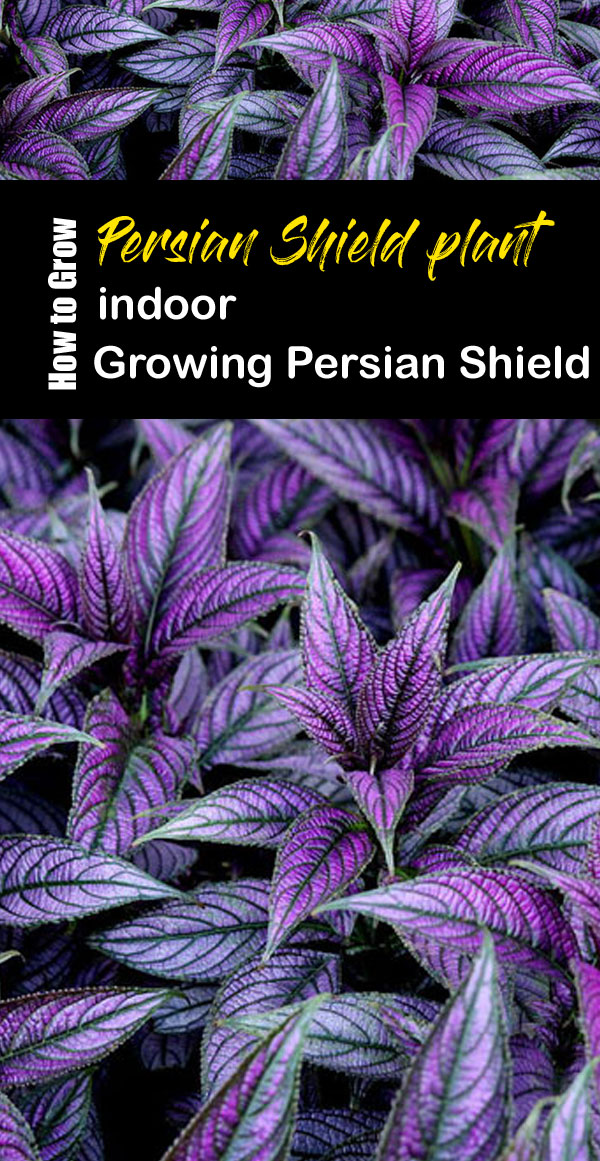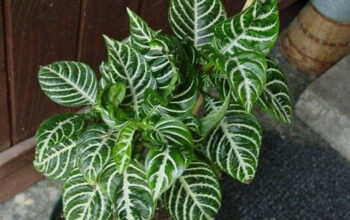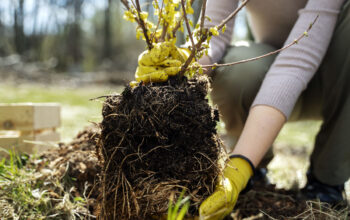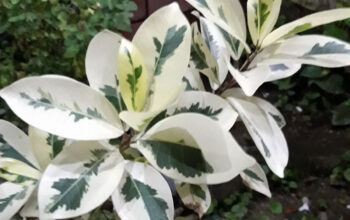Persian Shield Plant (Strobilanthes dyerianus)
This plant is native to Myanmar and is a member of the Acanthaceae family. Its common name is the Persian shield or Royal purple plant. It is an evergreen tropical shrub growing up to 1 m tall, cultivated for its dark green leaves with bright, metallic-purple stripes radiating outwards from the central vein. When grown under the proper conditions, Strobilanthes dyerianus can also produce pretty pale purple flowers.
You can plant it in gardens with impatiens and caladiums in vibrant pink and green. Add trailing sweet potato vines, pink snapdragons, and silvery green dusty millers to containers. You can also plant it on the sun-dappled edges of gardens full of ferns and snake plants, where their green textures contrast dramatically with the purple foliage.
Overview of Persian Shield Plant
Scientific name Strobilanthes dyerianus
Common name Royal purple plant, Persian Shield,
Plant type Flower plant (perennial)
Sun Full sun or partial shade
Soil well-drained, slightly acidic soil
Soil pH 5.5 to 6.0
Flower colors violet flowers
Blooming time Seasonal bloomer
Zone 9-10-11
How to Grow and Care Persian Shield Plant
The plant does well in either a pot inside or outside, in full sun to partial shade. The Persian shield can be propagated by seed or by cuttings. Cuttings should be made from the tips of the plant, just below a growth node. Insert the cutting into a non-soil medium, such as peat, after trimming off the bottom leaves. Mist the medium and cover the cutting with a bag. Remove the bag for one hour a day to prevent mold from developing. After a couple of weeks, the cutting will begin producing roots, and you can then plant them in potting soil.
A Persian shield plant is easy to maintain. The foliage of the Persian shield is usually not susceptible to fungus diseases or other problems, except for water stress and spotting. Aphids and whiteflies can become harmful to plants, especially when they are drought-stressed.
Sunlight
The Persian shield prefers bright indoor light and can tolerate moderate amounts of direct sunlight or dappled shade, although prolonged exposure can result in leaf burn. Too little water and over-exposure to the sun cause curled leaves and brown edges on leaves. In bright, indirect lighting, Persian shields are at their best, but those who are not accustomed to the harsh rays will show signs of sunstroke and environmental shock.
Soil
The Persian shield prefers neutral soil pH levels and can tolerate slightly acidic soil. A pH of 5.5 to 7.5 is optimal for the Persian shield plant. Persian shield plants flourish in soils that have lots of organic matter and are well-drained.
Watering
Watering should be done on a regular basis. Make sure the soil is moist but not soggy during the summer. If you need to check the moisture level, poke your finger into the top 5 cm of the potting mix. Allow it to dry longer if it feels particularly wet. Overwatering may cause fungus and root rot. Water once or twice a week, but test the soil first to determine if it needs watering.
You should reduce the frequency of watering during winter, when the plant is not in an active growth phase, and use room temperature water during this time. The Persian shield plant needs more shade if it doesn’t get enough water. Plants tend to wilt quickly if they aren’t given enough water, but they usually bounce back quickly once they are supplied with water.
Temperature and Humidity
A Persian shield does not survive in temperatures below 60 degrees Fahrenheit.
With high humidity, the Persian shield will perform best. They should be kept away from heaters, air conditioning, or draughty windows and doors in the house; this dries out the air and can quickly damage their leaves. If you mist daily, make sure to use soft water, as chlorine can damage the leaves.
Fertilizer
In the case of potted Persian shields, fertilizing is one of the most important care instructions. Liquid plant food diluted to half strength should be fed every two weeks. Persian shield will only need light feeding at the beginning of the season and again about halfway through the summer if grown in rich soil with plenty of moisture. During the peak season, you can feed your Persian shield plant with nitrogen every two weeks, but during the winter and fall, you can stop.
Pruning
You can prune your plant periodically to just above a node to promote branching and bushier growth. Cut off any damaged or dying leaves with a pair of sharp scissors or secateurs so that the plant can focus more energy on the newer, healthier growth. Be sure not to remove any faded leaves that appear after flowering.
Read also:
09 Leaf plants for containers. How to propagate your plants. Growing grapes in containers. How to grow Gomphrena plants. 12 plants you grow from cuttings. when and how to grow Wisteria plants. Growing Tuberroses plants in your garden. Vanilla beans growing and care tips. Blue chalk stick growing and care tips.
For Pin:

